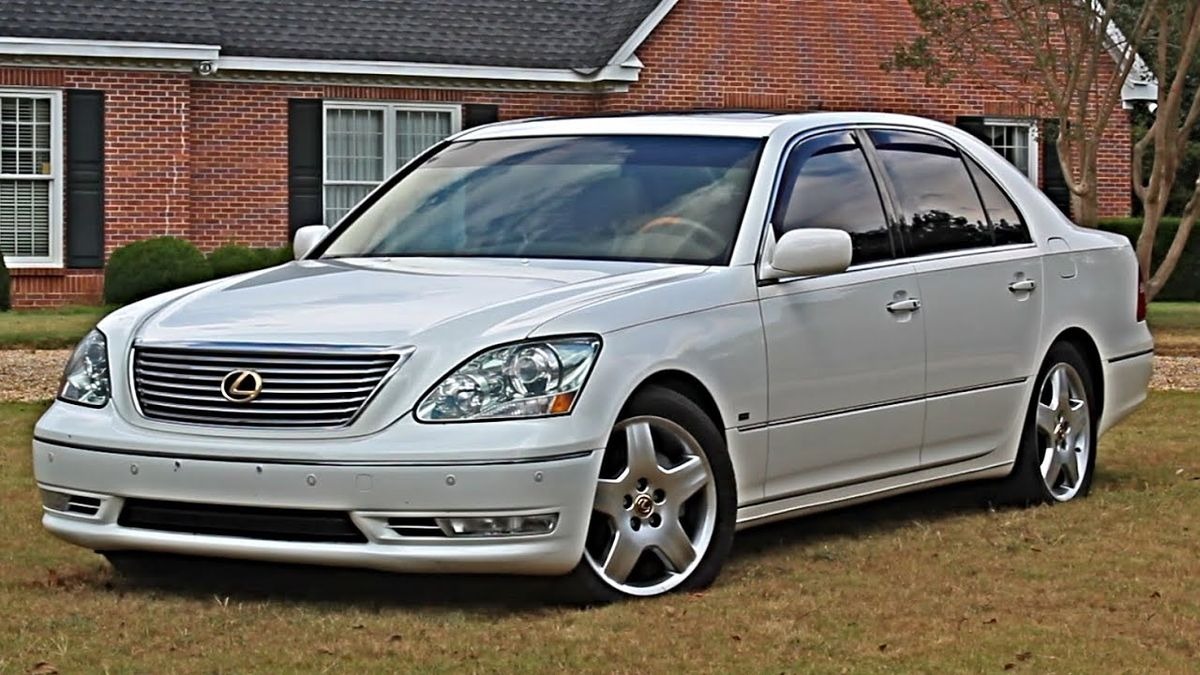When you think of Lexus, two words likely come to mind: luxury and longevity. Since its debut in 1989, Toyota’s luxury division has built a reputation for delivering vehicles that not only provide first-class comfort but also withstand the test of time better than almost any other premium brand.
From silky-smooth V8s to whisper-quiet cabins and impeccable craftsmanship, Lexus sedans are often seen as a safe investment, especially for those who plan to keep their cars well into six-figure mileage territory.
But not all Lexus sedans are created equal. While some models feel almost untouched after 150,000 miles, others begin to show their age well before that milestone. It’s this contrast that separates the legends from the letdowns.
There’s a common misconception that all Lexus sedans age gracefully simply because of the brand’s reputation. In reality, a combination of factors—such as engineering decisions, interior materials, drivetrain durability, and build location—can make or break the long-term experience.
Some sedans from Lexus deliver a level of timelessness that’s nearly unmatched, still driving and feeling as solid as they did the day they left the showroom floor.
Others, while still reliable in the basic mechanical sense, can lose their refinement, develop wear-related issues, or simply fall short of that premium feel as the odometer climbs. This guide is designed to help you distinguish between the two camps.
Whether you’re looking to buy a used Lexus with high mileage, keep your current one for the long haul, or simply curious about which models live up to their hype, understanding which Lexus sedans truly age like fine wine can save you a lot of money and frustration.
Some models are absolute workhorses—cars that rack up 200K, even 300K miles with minimal fuss, all while maintaining a cabin free of squeaks and rattles and a drivetrain that still feels lively. Others may be mechanically sound but begin to disappoint in terms of comfort, aesthetics, or ride quality.
In the list that follows, we’ve divided ten notable Lexus sedans into two categories: five that feel virtually brand new at 150,000 miles, and five that—despite the badge—don’t hold up quite as well.
Each model was chosen based on long-term performance data, owner feedback, engineering characteristics, and real-world driving impressions at high mileage.
We’ve gone beyond mere reliability stats to explore how these cars actually feel to live with as they age—how they ride, how they drive, how the interiors hold up, and whether they still deliver that elusive Lexus experience.
If you’re considering a high-mileage Lexus sedan—or already own one—this breakdown offers insight into which models continue to embody the brand’s promise of quality, and which ones struggle to maintain their luster after the honeymoon period is over.
Let’s dive into the five Lexus sedans that truly feel brand new at 150,000 miles—and five that simply don’t.
Also Read: 5 Gearboxes That Feel New At 150K And 5 That Grind After 50K
Lexus Sedans That Feel Brand New at 150K
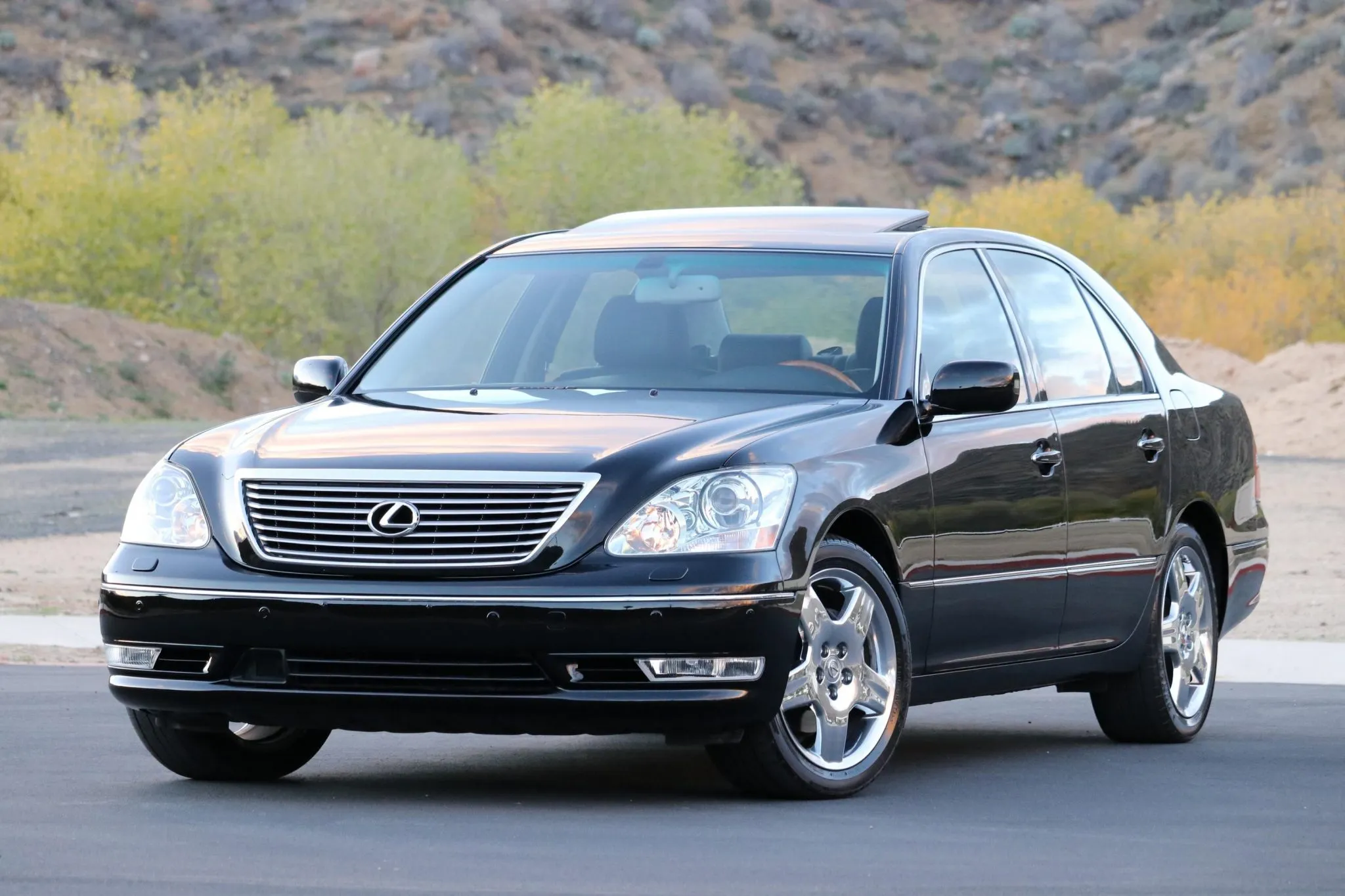
1. Lexus LS 430 (2001–2006)
When it comes to enduring luxury, the Lexus LS 430 is the undisputed heavyweight champion. Developed during the golden era of Japanese automotive engineering, this third-generation LS was a statement of quiet opulence and relentless reliability.
It was built not just to compete with Mercedes and BMW, but to exceed them in long-term quality. Under the hood, the 4.3-liter 3UZ-FE V8 engine is legendary for its smoothness and dependability, paired with a 5-speed or later 6-speed automatic transmission that shifts with buttery precision.
These components are known to withstand abuse and high mileage without breaking a sweat, and more importantly, they maintain their refinement deep into the ownership cycle. Even when approaching 150,000 miles, many LS 430s start reliably on cold mornings, purr down the highway with a whisper, and deliver acceleration that feels effortless and linear.
What makes the LS 430 particularly remarkable isn’t just the drivetrain—it’s the obsessive build quality and attention to detail in every corner of the vehicle. Open the door and you’ll find thick, high-quality leather upholstery, real wood trim that hasn’t faded or cracked, and switches and buttons that still feel tactile and well-damped.
The insulation throughout the cabin was meticulously designed, using layered sound-deadening materials and double-pane glass in some trims. This results in a cocoon-like ride experience that defies its age.
Long after its German rivals begin to exhibit creaks, rattles, and electrical faults, the LS 430 carries on with composure, its interior aging slowly and gracefully. It’s not uncommon to find 20-year-old LS 430s with interiors that feel like they’ve seen only a third of their actual miles.
Furthermore, the LS 430’s reliability goes beyond the engine and suspension. Features like power-adjustable rear seats, Mark Levinson sound systems, soft-close doors, and rear climate controls were futuristic at the time but are still functional on most well-kept models today.
The climate control system continues to pump out ice-cold air or perfectly balanced warmth, and even smaller components like power window motors or seat heaters rarely fail.
This combination of robust luxury and unshakable engineering makes the LS 430 one of the very few sedans that truly feel brand new at 150,000 miles—not just in theory, but in real-world ownership.
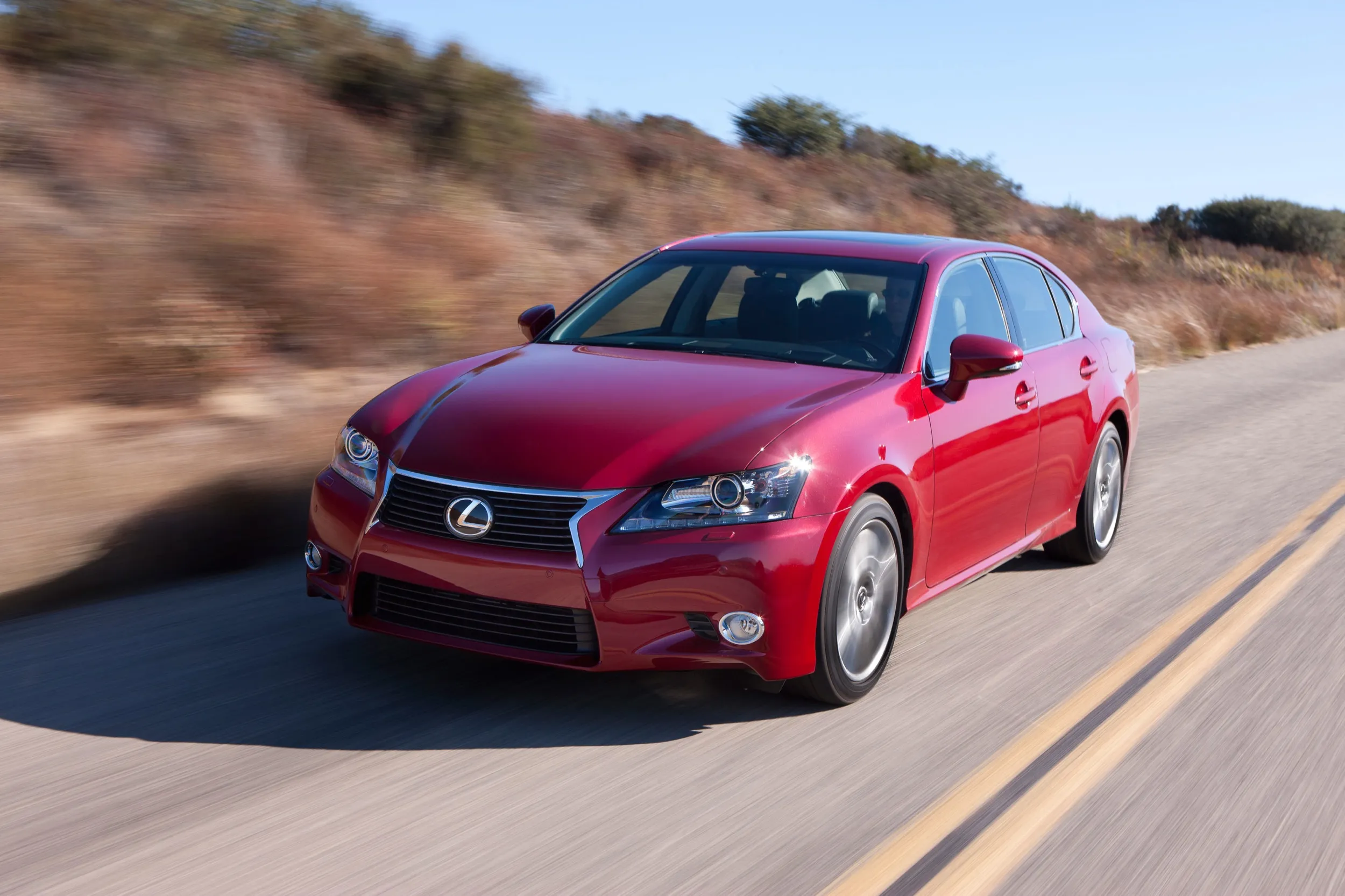
2. Lexus GS 350 (2007–2011)
The second-generation Lexus GS 350 is a masterclass in balance. It threads the needle between luxury and sport, delivering an agile, driver-focused sedan that still coddles its occupants with Lexus-level refinement.
At the heart of the GS 350 is the 3.5-liter 2GR-FSE V6 engine, an engineering marvel that produces over 300 horsepower and can easily cruise well past 200,000 miles with proper maintenance.
Even after 150,000 miles, this engine still starts quickly, idles smoothly, and accelerates with the kind of gusto more commonly associated with newer performance sedans.
The accompanying 6-speed automatic transmission remains fluid and accurate, rarely giving any signs of wear when properly serviced. That mechanical competence forms the bedrock of the GS 350’s enduring appeal.
Beyond the powertrain, the GS 350 stands out for its structural integrity and sophisticated suspension. The double-wishbone front and multi-link rear suspension systems were tuned to absorb road imperfections while still offering responsive cornering.
That formula holds up even as the miles climb. Unlike many cars that develop squeaks, bouncy ride quality, or unpredictable steering as they age, the GS 350 retains a tight, composed demeanor.
Long highway drives feel effortless, and the car never seems to lose its directional stability or smoothness. Even the smallest details, like the feel of the brake pedal or the resistance in the steering, hold their factory-fresh characteristics longer than most cars in this segment.
The chassis doesn’t sag, bushings don’t often degrade prematurely, and body flex is virtually nonexistent even at high mileage. Internally, the GS 350 continues the Lexus tradition of premium materials and durability.
Soft-touch plastics, leather seating, and real wood trim endure better than most European competitors of the same era. The dashboard doesn’t warp, the center console remains solid, and most electronic features—including navigation and climate control—continue to function reliably.
Owners often praise the build quality that gives the car a solid “thunk” when doors close, a silence that envelops the cabin even at freeway speeds, and seats that remain comfortable and supportive long after other vehicles’ cushions collapse or crack.
In all respects—mechanical, tactile, and experiential—the GS 350 is a vehicle that can wear 150,000 miles with dignity and without compromise.
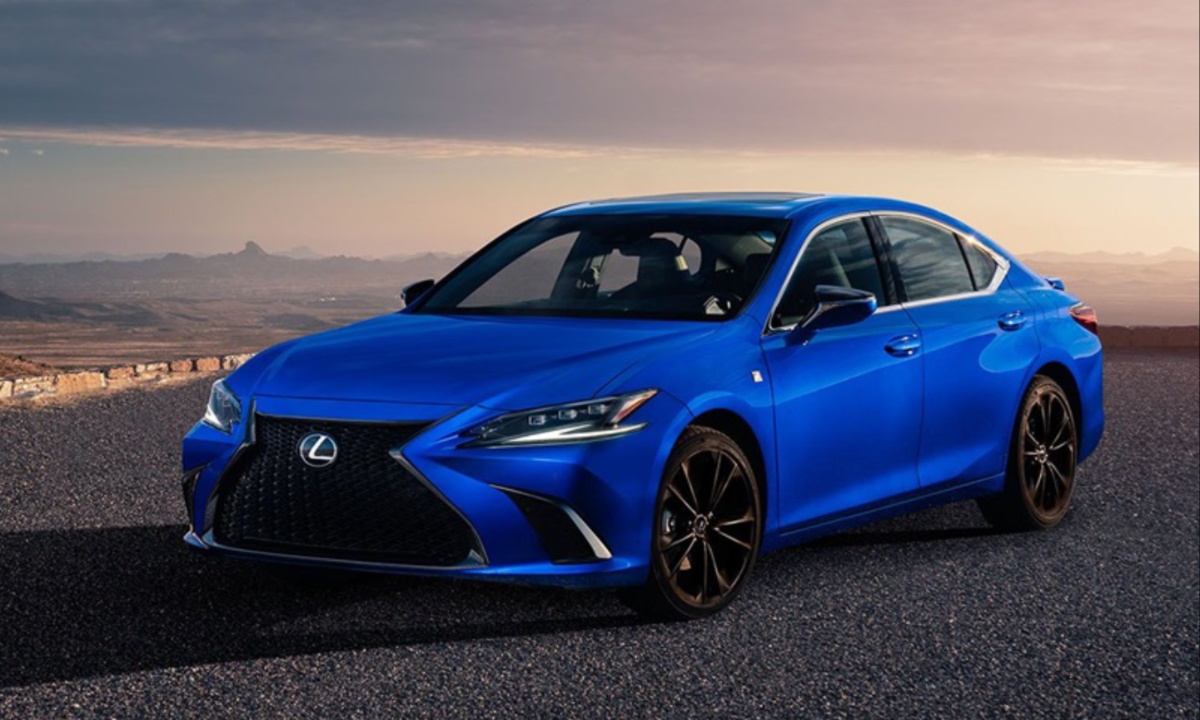
3. Lexus ES 350 (2013–2018)
The 2013–2018 Lexus ES 350 may not boast rear-wheel-drive dynamics or V8 power, but it more than makes up for it with outstanding refinement, comfort, and long-term consistency.
Powered by the stalwart 3.5-liter 2GR-FE V6 engine, the ES 350 delivers smooth acceleration and whisper-quiet operation, even with higher mileage. The power delivery is linear and graceful rather than aggressive, but this makes it all the more enjoyable on long trips or in day-to-day commuting.
Pair this with a 6-speed automatic transmission that prioritizes comfort over performance, and you get a drivetrain that remains just as composed and undramatic at 150,000 miles as it did at 15,000. Unlike turbocharged or dual-clutch setups that tend to wear with time, the ES 350’s traditional components are built to last.
One of the key reasons the ES 350 remains fresh-feeling at high mileage is the focus Lexus placed on ride quality. This generation introduced additional chassis stiffening and refined suspension geometry that significantly improved body control and cabin isolation.
Even after thousands of miles, the car glides over broken pavement and expansion joints with very little cabin disruption. The ride is neither too floaty nor too stiff—just supple enough to mask imperfections while still maintaining control.
Road and wind noise are minimal, thanks to additional insulation and improved aerodynamics, which is especially noticeable on highway drives. Unlike many rivals, the ES doesn’t become buzzy or harsh as it ages—its character remains consistently serene.
The cabin design also contributes heavily to the ES 350’s ageless nature. Materials are soft, rich, and generously applied, with stitched leatherette dashboards, real wood inserts, and metal accents that resist wear surprisingly well.
Seats maintain their bolstering, controls retain their tactile response, and the infotainment system, while dated in layout, remains intuitive and dependable. Importantly, nothing inside the ES feels like it was built to a price. It was designed to age well, and that foresight pays off in long-term ownership.
At 150,000 miles, you’re still greeted with a silent cabin, a drivetrain that’s responsive, and an experience that remains unmistakably luxurious. It’s a sedan that embodies Lexus’ mission of creating vehicles that feel timeless in both form and function.
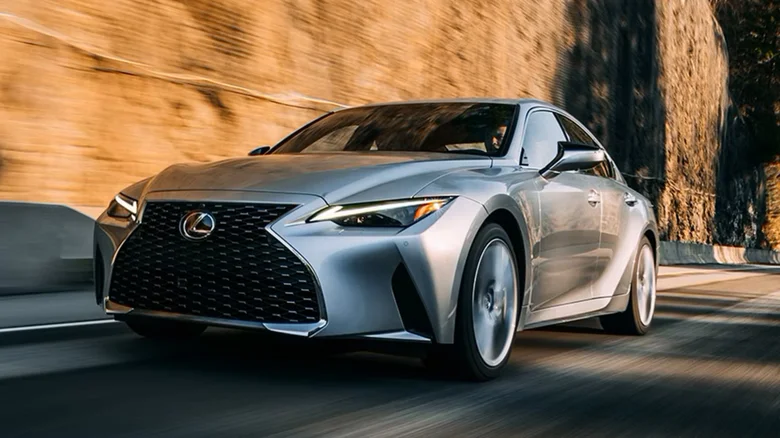
4. Lexus IS 350 (2014–2020)
The third-generation Lexus IS 350 is one of the most rewarding sedans in the Lexus lineup for enthusiasts and casual drivers alike. With its aggressive styling, RWD or AWD options, and the high-revving 3.5-liter 2GR-FKS V6 engine under the hood, the IS 350 manages to be fun, refined, and impressively durable all at once.
The engine remains a standout even at 150,000 miles, providing smooth power delivery without the loss of performance or refinement that afflicts some aging sports sedans.
Lexus tuned this V6 for durability, minimizing stress on components and pairing it with a well-calibrated 6- or 8-speed automatic transmission (depending on the year) that rarely falters even as the miles accumulate. The IS 350 retains its agility, with handling that remains crisp and predictable even as tires and suspension components wear.
Ride quality and structural integrity are other areas where the IS 350 impresses with age. Even after extensive driving, the chassis remains tight and free of squeaks or rattles, a testament to the quality of materials and manufacturing processes employed.
This is a car that’s often pushed harder than its ES or LS counterparts due to its sportier nature, yet it holds up admirably. The double-wishbone front suspension and multi-link rear keep the ride composed, while electric power steering remains direct and well-weighted.
Enthusiasts and everyday drivers alike appreciate how the car communicates with the road while still maintaining that Lexus-level of quietness and comfort. It’s not a soft cruiser, but it’s certainly not a harsh one either—striking a rare balance that persists into high mileage.
Inside, the IS 350 continues to impress with durable materials and consistent craftsmanship. The seats are well-bolstered and built to last, retaining their form and function even with daily use.
Buttons, knobs, and infotainment interfaces are less prone to failure than those found in European competitors. Even technology features like dual-zone climate control, heated and ventilated seats, and backup cameras remain operational and reliable with age.
Owners often report very few failures, aside from minor cosmetic issues, which reinforces the IS 350’s reputation as a luxury sport sedan that delivers both performance and peace of mind over the long haul.
In short, it may be one of the few sporty sedans that’s still a blast to drive—and a pleasure to own—after crossing the 150K milestone.
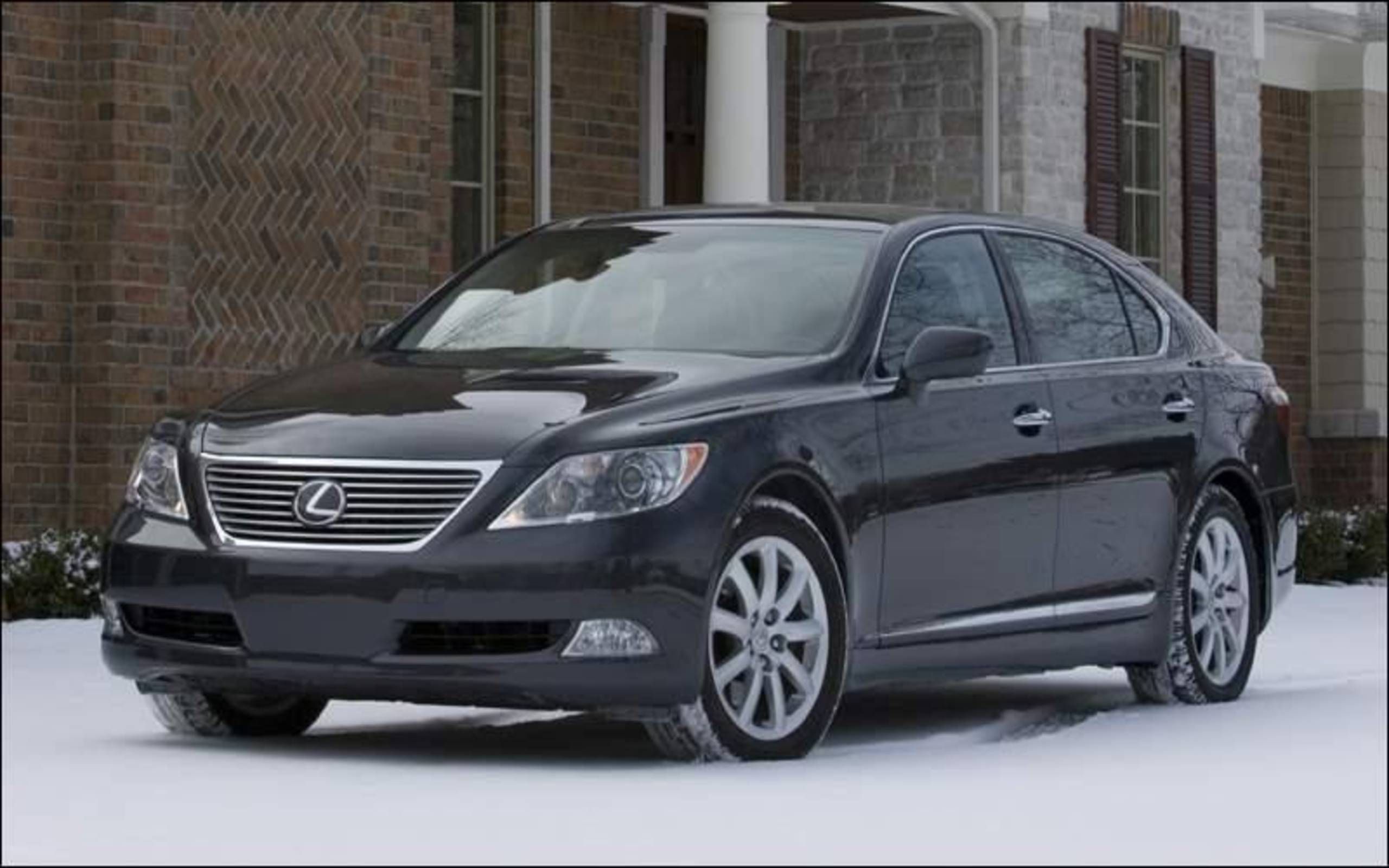
5. Lexus LS 460 (2007–2012)
The Lexus LS 460 represents the transition of the LS flagship from old-school opulence to modern sophistication. Featuring an advanced 4.6-liter 1UR-FSE V8 and an industry-first 8-speed automatic transmission, this generation was bold in its technology while still retaining Lexus’ traditional hallmarks of smoothness and comfort.
Remarkably, even with all this complexity, the LS 460 maintains an impressively high standard of reliability and performance well into high mileage territory.
By the time one of these sedans hits 150,000 miles, the drivetrain—if well-maintained—still performs flawlessly. Acceleration remains potent, the transmission continues to shift without hesitation, and engine noise is so subdued that it’s easy to forget the car isn’t brand new.
Ride quality is one of the LS 460’s strongest attributes, even at higher mileage. The standard suspension setup offers buttery smoothness, and models equipped with air suspension can feel like floating over asphalt, provided the system has been properly maintained.
Some owners may need to replace air struts around the 120K–150K mark, but this investment often rejuvenates the vehicle back to showroom-level ride comfort.
The cabin remains serene, bolstered by extensive soundproofing, laminated glass, and a rigid chassis that prevents creaks and body flex. Despite its size and weight, the LS 460 handles confidently and remains a peaceful long-distance cruiser, even with an odometer deep into six-figure territory.
The cabin is where the LS 460 truly earns its place on this list. Every touchpoint reflects luxury—from the supple leather upholstery to the polished wood veneer, and even to the weight and resistance of each button. At 150K, many interiors still look stunning, with minor wear being the only visible sign of age.
Features such as the power reclining rear seats, massaging functions, and Mark Levinson audio systems continue to work in many high-mileage examples, reinforcing the vehicle’s craftsmanship.
The LS 460 was built not just to impress on a test drive, but to endure. As such, it remains one of the few luxury sedans that, when properly cared for, can make you forget you’re driving something that’s covered 150,000 miles.
Lexus Sedans That Don’t Feel Brand New at 150K
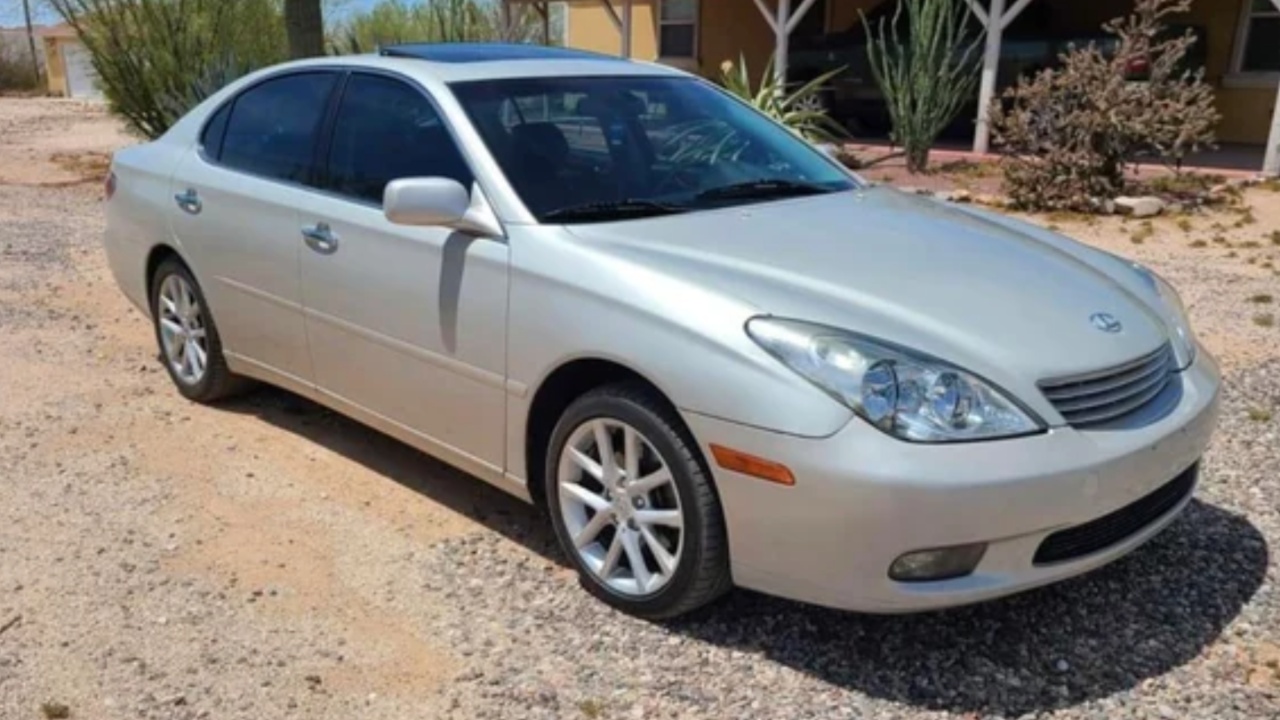
1. Lexus ES 300 (1997–2001)
The Lexus ES 300 from the late ’90s and early 2000s represents a time when Lexus was still refining the formula for its mid-size luxury offering. Built on the same platform as the Toyota Camry, the ES 300 was always more about cushioned comfort than innovation or athleticism.
While mechanically reliable, the model lacks the refinement of later ES sedans, and it begins to show its age both in feel and appearance well before reaching 150,000 miles. The 3.0-liter V6, though smooth when new, often loses its vigor over time.
Throttle response becomes lazy, shifts from the 4-speed automatic transmission can feel delayed or clunky, and engine mounts may wear out, leading to vibrations that make the driving experience noticeably less refined.
Beyond performance issues, the cabin of the ES 300 tends to degrade in quality as the miles add up. Interior plastics and faux wood trim lose their luster, developing creaks, squeaks, and surface cracks. Common wear areas—like the steering wheel, driver’s seat bolsters, and climate control buttons—begin to show excessive fatigue.
The headliner may sag, the leather may harden or crack, and sun exposure over the years often leads to faded dashboards or peeling material, particularly in hotter climates.
Compared to newer Lexus interiors that seem to resist aging like they’re dipped in a time capsule, the ES 300’s cabin feels outclassed once it crosses the 100K mark, let alone 150 K.
Mechanically, while the engine can soldier on with routine maintenance, other areas of the car can become problematic as it ages. Struts begin to wear, leading to a floaty or unstable ride. Electrical gremlins may crop up, such as failing window regulators, intermittent dash lights, or temperamental HVAC systems.
The older 4-speed automatic transmission lacks the refinement and fuel efficiency of newer units, and while not prone to catastrophic failure, it tends to feel clunky and outdated, particularly as components wear.
In short, the ES 300 is a reliable commuter for its time, but it lacks the materials, insulation, and engineering finesse to feel luxurious—or even particularly solid—by the time it hits the 150,000-mile milestone.
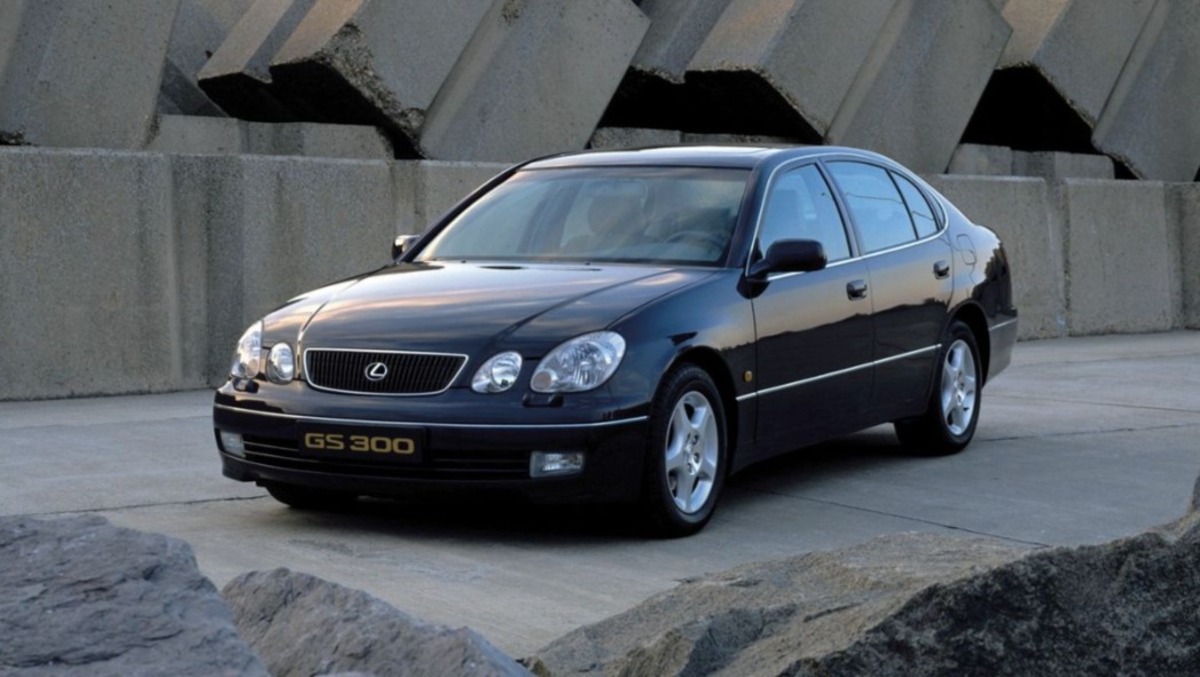
2. Lexus GS 300 (2006–2007)
The 2006–2007 Lexus GS 300 was meant to be a high-tech executive sedan, but it ended up as one of the more underwhelming entries in the GS lineup. While it carries the prestige of the Lexus badge and offers a comfortable ride, this version of the GS is often remembered for its tepid performance and aging tech.
The 3.0-liter V6 engine (3GR-FSE) it uses was a short-lived experiment before Lexus transitioned to the more powerful and reliable 3.5-liter 2GR-FSE in the GS 350.
At 150,000 miles, the GS 300’s performance is noticeably dulled. The engine feels sluggish by today’s standards and is more prone to carbon buildup, hesitation, and inconsistent throttle response. The transmission, though generally durable, can exhibit hard shifts or lag when transitioning between gears, especially if fluid changes were neglected.
Interior aging is another drawback. While Lexus interiors are generally known for their long-term durability, the GS 300 suffers from some quality control issues that become more apparent with age. The dashboard and door panels are prone to warping or cracking, particularly in sunny climates, due to inadequate UV protection in the materials used.
Leather seats can develop visible wear lines, particularly on the driver’s side, and some of the wood trim used during this period was prone to fading and even peeling.
The infotainment system, which once felt cutting-edge, now shows its age in both graphics and speed. Button backlighting may dim or fail, and in-car tech such as navigation or voice control can become glitchy or simply outdated to the point of frustration.
Another issue that plagues high-mileage GS 300s is suspension wear and chassis fatigue. Even though the car rides on a relatively advanced multi-link setup, components like bushings, control arms, and shocks often require replacement by 120,000–150,000 miles.
If these parts are not refreshed, the car begins to feel loose, floaty, and disconnected from the road. While not unsafe, the deterioration of ride quality erodes the sense of refinement that Lexus owners typically expect
. Owners who prioritize a “new car feel” will likely be disappointed by how quickly this version of the GS starts to feel its age compared to its more robust siblings like the GS 350 or LS 460.

3. Lexus IS 250 (2006–2013)
The Lexus IS 250 is a classic case of a car that looks far more exciting than it performs, especially once the miles start to stack up. Marketed as a sporty compact luxury sedan, it came with a 2.5-liter V6 engine that, while smooth in its prime, lacks the muscle or longevity of other Lexus powertrains.
One of its biggest drawbacks at high mileage is its tendency to develop carbon buildup in the intake valves—a known issue with the direct injection system used.
At 150,000 miles, this buildup can lead to poor throttle response, hesitation under acceleration, reduced fuel economy, and even engine misfires if left untreated. These issues make the IS 250 feel lethargic and unrefined, a far cry from the silky performance expected of a luxury sports sedan.
Cabin-wise, the IS 250 starts to show its age faster than many other Lexus models. The compact dimensions and tighter interior spaces result in more visible wear on high-contact surfaces. The seats may lose padding, leather may crack or fade, and plastics around the center console and door handles often get scratched or brittle.
Many early IS 250s suffered from dashboard and door panel material deterioration, with cracking or melting reported in various climates.
Electrically, things like seat heaters, sunroof motors, or even backup cameras may become less reliable with age, especially if the car has been exposed to extreme temperatures or inconsistent maintenance. While the interior retains a high level of fit and finish initially, it doesn’t have the resilience to feel “like new” at 150K.
Driving dynamics also take a hit as the miles roll on. While the IS 250 was praised for its nimble handling when new, older models often suffer from worn-out suspension components, increased cabin noise, and less responsive steering. Suspension bushings and shocks tend to wear out around the 100K–120K mile mark, leading to a harsher or less controlled ride.
Additionally, because the IS 250 was often bought by younger drivers or enthusiasts, many used models have seen aggressive driving styles, which can accelerate wear and diminish reliability. It’s not that the IS 250 is a bad car—it’s simply one that doesn’t age with the same grace and solidity that Lexus is typically known for.
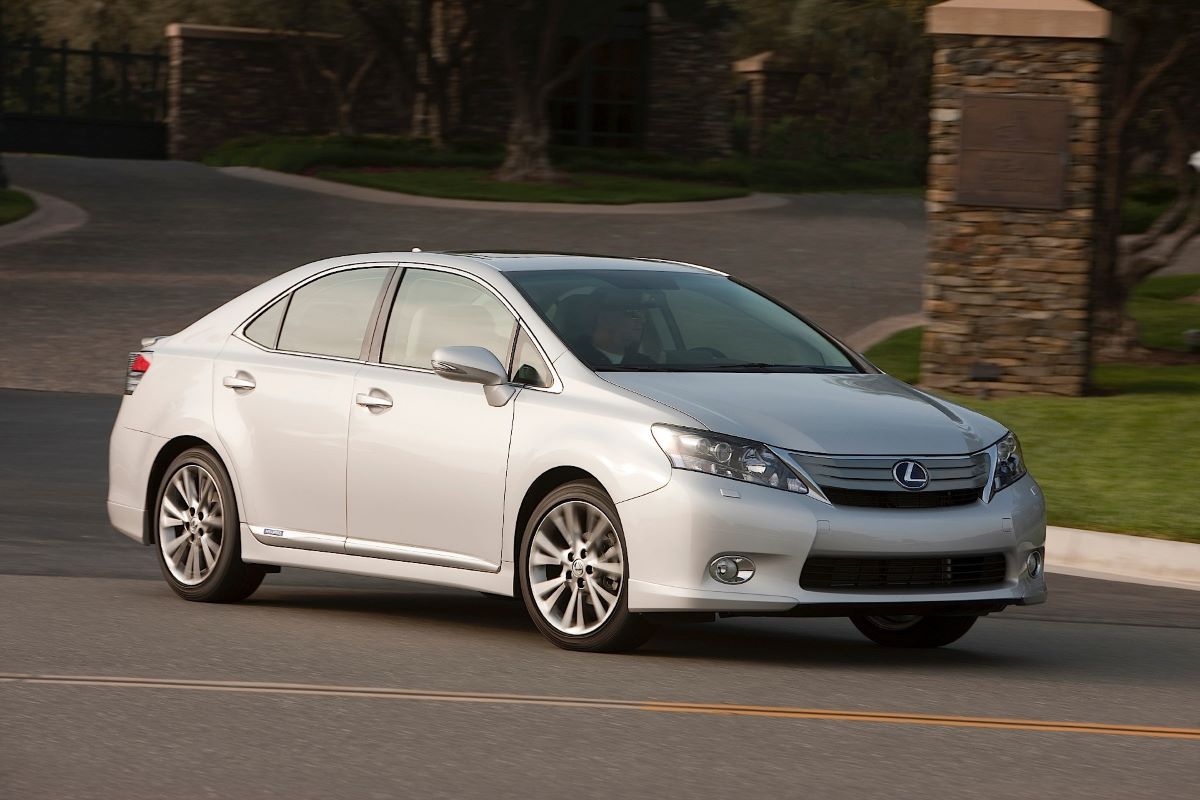
4. Lexus HS 250h (2010–2012)
The Lexus HS 250h was Lexus’s attempt at building a compact luxury hybrid, but it ultimately became one of the brand’s rare missteps. While the idea of a fuel-efficient sedan with Lexus comfort sounded appealing, the execution was less than stellar, and it shows all too clearly by the time these models reach 150,000 miles.
Under the hood, the HS 250h uses a 2.4-liter four-cylinder engine paired with an electric motor and a CVT transmission. While the hybrid powertrain is generally reliable, it lacks the smoothness and refinement expected from a Lexus.
At higher mileage, the engine can grow noisier and more coarse, and the CVT can develop a drone or slipping sensation, particularly if the hybrid system hasn’t been properly maintained. Acceleration is modest at best and begins to feel even more strained as the vehicle ages.
Interior quality is another major weak point. Although Lexus attempted to distinguish the HS from its Toyota Prius cousin with upgraded materials, many of these materials don’t hold up over time. The leatherette seats show wear quickly, soft plastics scratch and fade, and the center console area becomes prone to looseness or creaking.
Climate controls, infotainment touch interfaces, and other electronic features may also begin to fail or behave erratically as components age. What was once an innovative dashboard layout becomes frustratingly dated, and more importantly, less reliable.
Owners report failing touchscreen interfaces, flickering instrument clusters, and occasional problems with the hybrid battery display. While not always costly to fix, these annoyances add up, detracting from the “luxury” experience the HS was supposed to deliver.
Suspension wear and driving dynamics also contribute to the HS 250h’s lack of staying power. At 150,000 miles, ride quality begins to deteriorate sharply. The suspension components, never particularly robust to begin with, lose their damping ability, resulting in a harsher, noisier ride.
Cabin insulation is not up to Lexus standards, especially at highway speeds, and road noise becomes increasingly intrusive. The hybrid system’s regenerative braking can also grow inconsistent with age, feeling grabby or vague.
Add in the fact that resale values for the HS have plummeted and replacement parts for some hybrid components can be expensive, and it becomes clear why the HS 250h doesn’t carry the same long-term ownership appeal as other Lexus sedans.
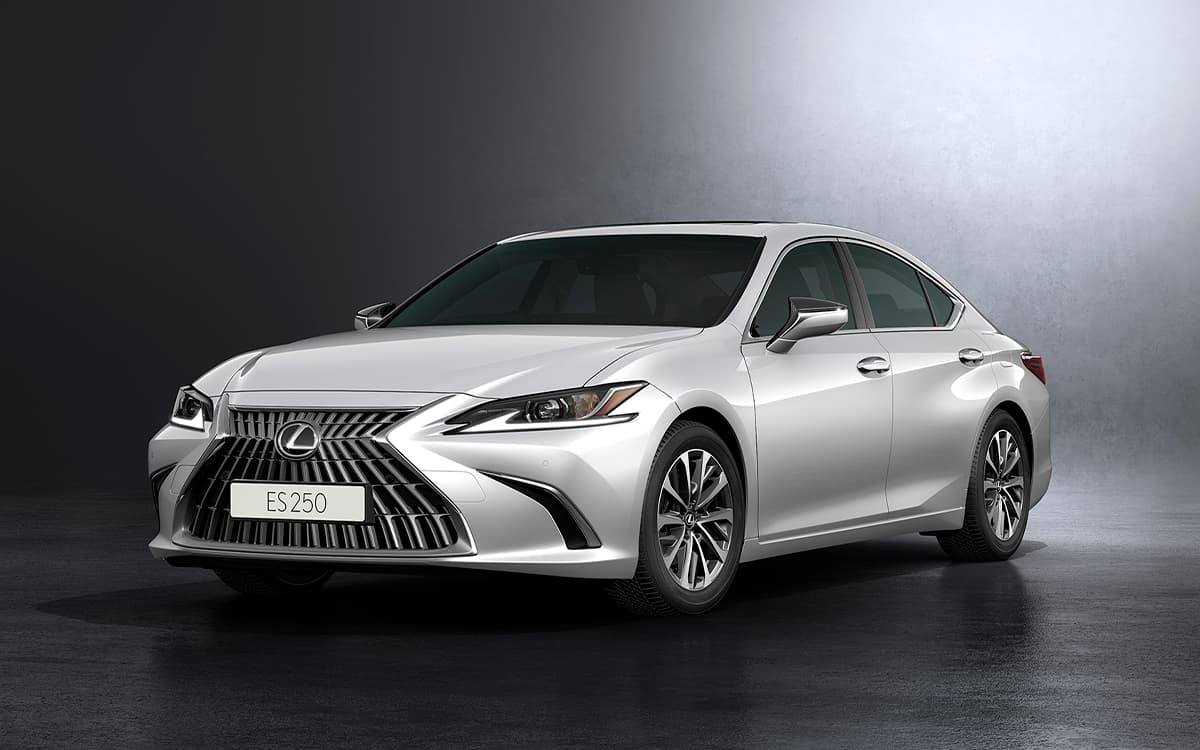
5. Lexus ES 250 (2020–Present, Base Model)
The Lexus ES 250 is a recent addition to the ES family, introduced to provide an all-wheel-drive option and greater fuel efficiency through a smaller 2.5-liter naturally aspirated four-cylinder engine.
While it is too new for most examples to have hit 150,000 miles, early signs suggest that this model may not hold up to the high standards set by its V6 siblings.
The engine, while efficient, is noticeably underpowered, and its performance becomes more strained over time, particularly under full load or uphill driving.
Combined with a gearless CVT-style transmission, the ES 250 lacks the buttery smoothness and quiet acceleration that Lexus traditionally delivers. As components begin to wear, the driving experience becomes coarse, especially in situations where torque is in demand.
Interior quality also feels like a step down from the higher-end Lexus sedans. While the design remains elegant, material quality in the ES 250’s base trims doesn’t exude the same longevity or premium feel.
Hard plastics on lower door panels, simplified seat upholstery, and thinner acoustic insulation mean that road and engine noise begin to creep in as the car ages.
Over time, the difference in craftsmanship becomes more apparent, especially in the areas that receive the most tactile interaction—armrests, door handles, infotainment dials, and touch interfaces. As these components begin to degrade, they chip away at the impression of enduring luxury that Lexus is known for.
In terms of ride and handling, the ES 250 remains composed but not exceptional. Its all-wheel-drive system is designed more for light snow than dynamic cornering, and as suspension parts age, the softer setup will likely begin to feel more disconnected.
The lighter weight of the car does help with fuel economy, but also contributes to a slightly tinny feel when closing doors or traversing bumpy roads. It lacks the vault-like solidity found in older LS or GS models.
While it may remain dependable from a mechanical standpoint, the ES 250 may struggle to feel luxurious or even especially “Lexus-like”—at 150,000 miles, especially when compared to more robust offerings in the brand’s history.
Also Read: 5 Clutches That Hold Power And 5 That Burn Out Under Normal Use
In the world of luxury sedans, few names inspire long-term confidence like Lexus. Known for blending refined comfort with Toyota’s proven mechanical reliability, the brand has earned its place at the top of many used car buyers’ lists.
But after digging into ten different Lexus sedans and examining their performance, feel, and finish at or near 150,000 miles, one thing becomes abundantly clear: not every Lexus is built to the same long-lasting standard.
While some models continue to exude grace, refinement, and mechanical excellence well into high-mileage territory, others reveal their compromises in materials, engineering, or design sooner than you’d expect.
The LS 430, GS 350, and LS 460 stand out as paragons of Lexus excellence—cars that still ride like bank vaults on wheels and perform with impressive composure after thousands of road hours.
These sedans were built with longevity in mind, not just in the drivetrain, but in the fine details of the cabin, the insulation, and the structural components that give a vehicle that solid, “new car” feel.
Likewise, the IS 350 and ES 350 (2013–2018) have proven that even smaller or more budget-friendly Lexus sedans can deliver long-lasting luxury when properly engineered. These cars retain not only their reliability but the subtle nuances that define a luxury driving experience: quiet cabins, smooth power delivery, and minimal signs of interior wear.
On the other hand, some Lexus sedans struggle to hold onto that magic. The IS 250 and GS 300 (2006–2007) in particular suffer from aging drivetrains, underwhelming engines, and interior components that don’t withstand the rigors of time as gracefully. While still functional and generally dependable, they begin to lose the essence of what makes a Lexus feel special.
The ES 300 (1997–2001) is another example—mechanically sturdy, but lacking the level of refinement and cabin durability found in more modern models. And let’s not forget the HS 250h, a well-intentioned hybrid that never quite found its identity and often feels like a dressed-up Prius rather than a true luxury sedan.
Finally, the ES 250 (2020–present), though still relatively new, shows signs that cost-cutting in materials and drivetrain design may prevent it from aging as gracefully as its V6-powered predecessors.
This doesn’t mean these “weaker” models are bad cars. Many still offer solid value, dependable performance, and lower maintenance costs compared to their European counterparts.
But for buyers who expect the full Lexus experience to last beyond the 150K mark, it’s important to know which models deliver that level of excellence—and which ones may fall short.
Not all Lexuses are timeless, and longevity isn’t just about not breaking down; it’s about how the car feels, how it rides, and how much it continues to delight even after years of ownership.
In summary, Lexus remains one of the best choices for buyers who want a luxury car that can go the distance. But as with any brand, some models achieve greatness, while others merely get by.
For those seeking a Lexus sedan that still feels fresh after 150,000 miles, the smart move is to focus on the models that combine mechanical integrity with top-tier cabin quality and road manners. Choose wisely, and your Lexus won’t just last—it will thrive.

